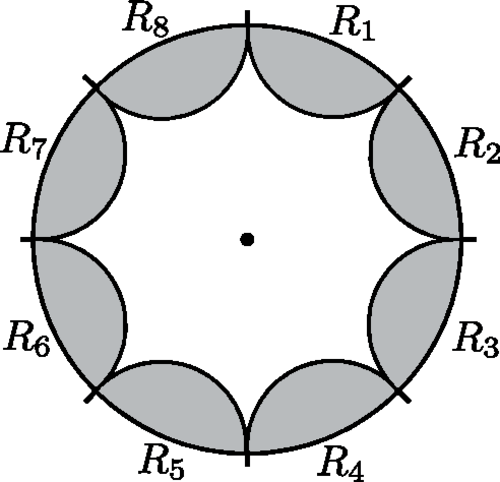Jun 20 2019
A pair of scientists from the United States and Japan have performed a new study that shows that symmetry is not possible when gravity is combined with quantum mechanics.
 A diagram used to prove that quantum gravity cannot have any global symmetry. Symmetry, if existed, could act only on the shaded regions in the diagram and causes no change around the black spot in the middle. The shaded regions can be made as small as we like by dividing the boundary circle more and more. Thus, the alleged symmetry would not act anywhere inside of the circle. Contradiction. (Image credit: Harlow and Ooguri)
A diagram used to prove that quantum gravity cannot have any global symmetry. Symmetry, if existed, could act only on the shaded regions in the diagram and causes no change around the black spot in the middle. The shaded regions can be made as small as we like by dividing the boundary circle more and more. Thus, the alleged symmetry would not act anywhere inside of the circle. Contradiction. (Image credit: Harlow and Ooguri)
Many physicists believe that there must a beautiful set of laws in Nature and that one way to quantify the beauty is by symmetry. Some of the symmetries may be hidden in our world, but they should manifest themselves if we look at Nature at a more fundamental level. We showed that this expectation is wrong once we take into account the gravity.
Hirosi Ooguri, Director, Kavli Institute for the Physics and Mathematics of the Universe
Ooguri is one of the authors of the paper.
Four types of fundamental forces exist in nature: gravity, weak force, strong force, and electromagnetism. Of these, gravity is the only one that cannot yet be explained at the quantum level. According to scientists, the holographic principle is a vital hint to successfully combine quantum mechanics and gravity.
In a hologram, 3D images pop out from a 2D screen. In the same manner, the holographic principle enables physicists to investigate gravitational systems by projecting them on a boundary surrounding the entire Universe. In the late 1990s, Juan Maldacena developed the AdS/CFT (anti-de Sitter/conformal field theory) correspondence, which has been specifically useful since it offers a precise mathematical description of the holographic principle.
In the study published on May 17th, 2019, Ooguri and Daniel Harlow, Assistant Professor at Massachusetts Institute of Technology, showed that symmetry is not feasible in a gravitational theory if it follows the holographic principle.
Earlier research by Harlow and colleagues had discovered an accurate mathematical analogy between quantum error correcting codes and the holographic principle. These codes safeguard the information within a quantum computer. In the new study, Ooguri and Harlow demonstrated that such quantum error correcting codes are not compatible with any symmetry, suggesting that symmetry would not be possible in quantum gravity.
The study outcomes have several crucial implications. Specifically, they predict that magnetic monopoles exist and that protons are stable against decaying into other elementary particles.
The study has been published in Physical Review Letters on May 17th, 2019, and chosen for Editor’s Suggestion “due to its particular importance, innovation, and broad appeal.”